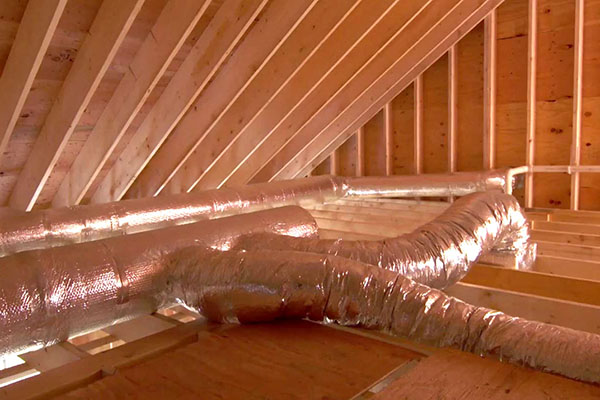New Construction Ductwork: 4 Things to Consider During the Hvac Rough in Process

The HVAC system of any building plays a crucial role in helping you maintain comfort and happiness in your home. The heating, ventilation, and air conditioning (HVAC) system is responsible for controlling the airflow inside a building. It can be an incredibly complex maze of twisting, turning pipes and vents that are very hard to access and maintain once installed. For this reason, it’s crucial to get things right during the installation and “rough in” period. The HVAC rough in period refers to when the HVAC ductwork has been installed, yet no plumbing, electrical, or exterior walls have been put into place. This is so that inspectors can have a much easier time coming in and going over each aspect of the ductwork, making sure that it is not contaminated and is fit for use. The rough in period has a few layers and nuances to it that you as a tenant, homeowner, or building manager should be informed on.
HVAC Rough-in Process
In order to bring you up to speed on everything you need to know, let’s go over a few points that you should consider during the HVAC rough in process.
1. The HVAC Rough in Process Helps Speed Things up
The HVAC rough in process is just one of a few different types of rough ins. There are also plumbing rough in periods and electrical rough in periods. The reason this period is known as the rough in is that inspectors are coming in to pass or fail work before any of the main components of the building are installed. It is a preliminary, yet crucial aspect of constructing a building from the ground up. The reason inspectors are brought in during this early phase of construction is so that they can much more easily access the areas and equipment that they need to inspect. The HVAC rough in process happens first before all other rough ins because it’s easier to install plumbing and electrical wires around HVAC ductwork than it is to do it the other way around. If a building does not pass the rough in inspection, HVAC technicians, electricians, and/or plumbers will have to keep coming back to make the necessary changes requested by the inspector. Changes to the layout or the order of subsequent installations will also be completed during this phase.
2. There are 3 Levels to New Construction Ductwork Cleanliness

There are three different levels of ductwork cleanliness as defined by SMACNA; these are basic, intermediate, and advanced. Basic is the lowest acceptable level of ductwork cleanliness, allowing for slight imperfections like discoloration from plasma cutters, a light oil coating, exposed mastic, external or internal self-adhesive identification levels, a light surface coating of zinc oxide, internal insulation and fasteners, and rivets, screws, bolts, and other protrusions in the internal air pathway. Intermediate level ductwork requires the storage areas of the ductwork to be dry and clean, with a minimal amount of exposure to contaminants like dust. Self-adhesive labels for the purpose of identification can only be placed on external surfaces of the ductwork, and sections of ductwork need to be wrapped, capped, or covered during both storage and transportation. The inside of the ductwork will also need to be wiped down and open sections covered for protection during breaks in the construction process. The HVAC ductwork must meet all of these qualifications to pass for intermediate level cleanliness. Advanced level cleanliness requires self-adhesive labels for the purpose of identification to only be placed on external surfaces of the ductwork, and sections of ductwork need to be wrapped, capped, or covered during both storage and transportation. Sealed ends will need to be inspected and resealed if broken at any time. If the construction standards for ductwork cleanliness are more stringent than the advanced requirements laid down by SMACNA, they are to be followed instead.
3. Most New Construction Ductwork is Vulnerable to Contamination
You may not have realized this, but new construction ductwork can become contaminated before it is even up and running. Any gaps, leaks or holes in the ductwork which are missed by the inspector or deemed too small to matter can let in a variety of different contaminants including dust and other microscopic particles of matter kicked up during the construction process. If this happens, the air in your building will be contaminated as soon as you turn on the HVAC system. To counteract this, modern ductwork should have many access panels throughout the system. They should be located at major junction and transition points, points running along lengthy, straight sections of ductwork, and at the bottom and top of vertical ducts which go through multiple floors. This can help prevent contamination of your HVAC system.
4. You Can Meet Inspector Standards on the First Try with Aeroseal
Because the HVAC rough in process happens first, you need to get it done right away to avoid delaying construction. To complete this without shoddy installation requires the effort of a professional team like the folks at Aeroseal. Aeroseal uses patented, computer-operated technology to identify and seal up even the smallest of holes in your ductwork with mastic. Aeroseal will measure your ductwork efficiency and give you post-seal results of how much it was improved. They have shown to be 33% more profitable when compared to hand-sealing efforts and will reduce the labor hours your people need to spend by up to 75% as well.













